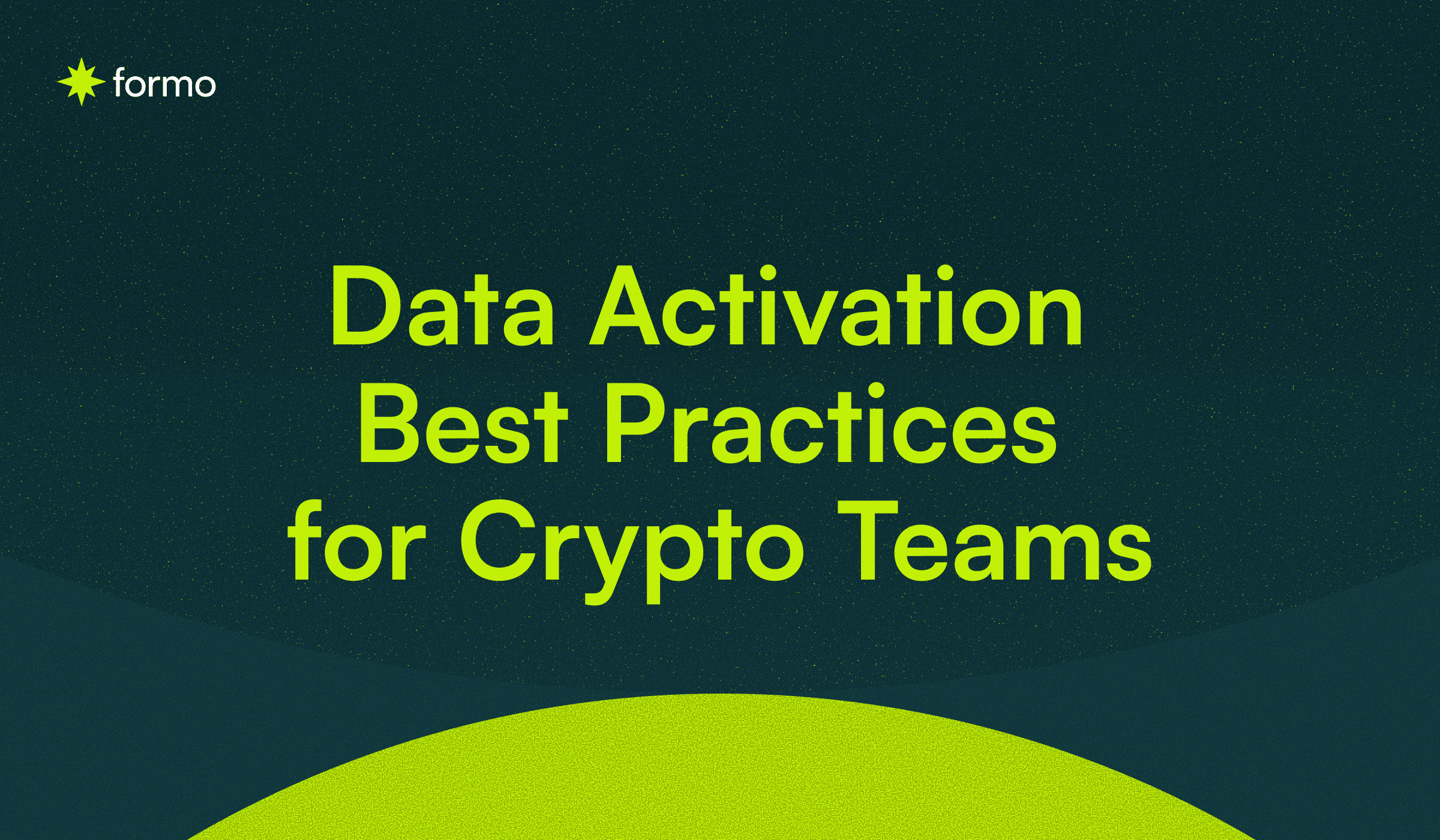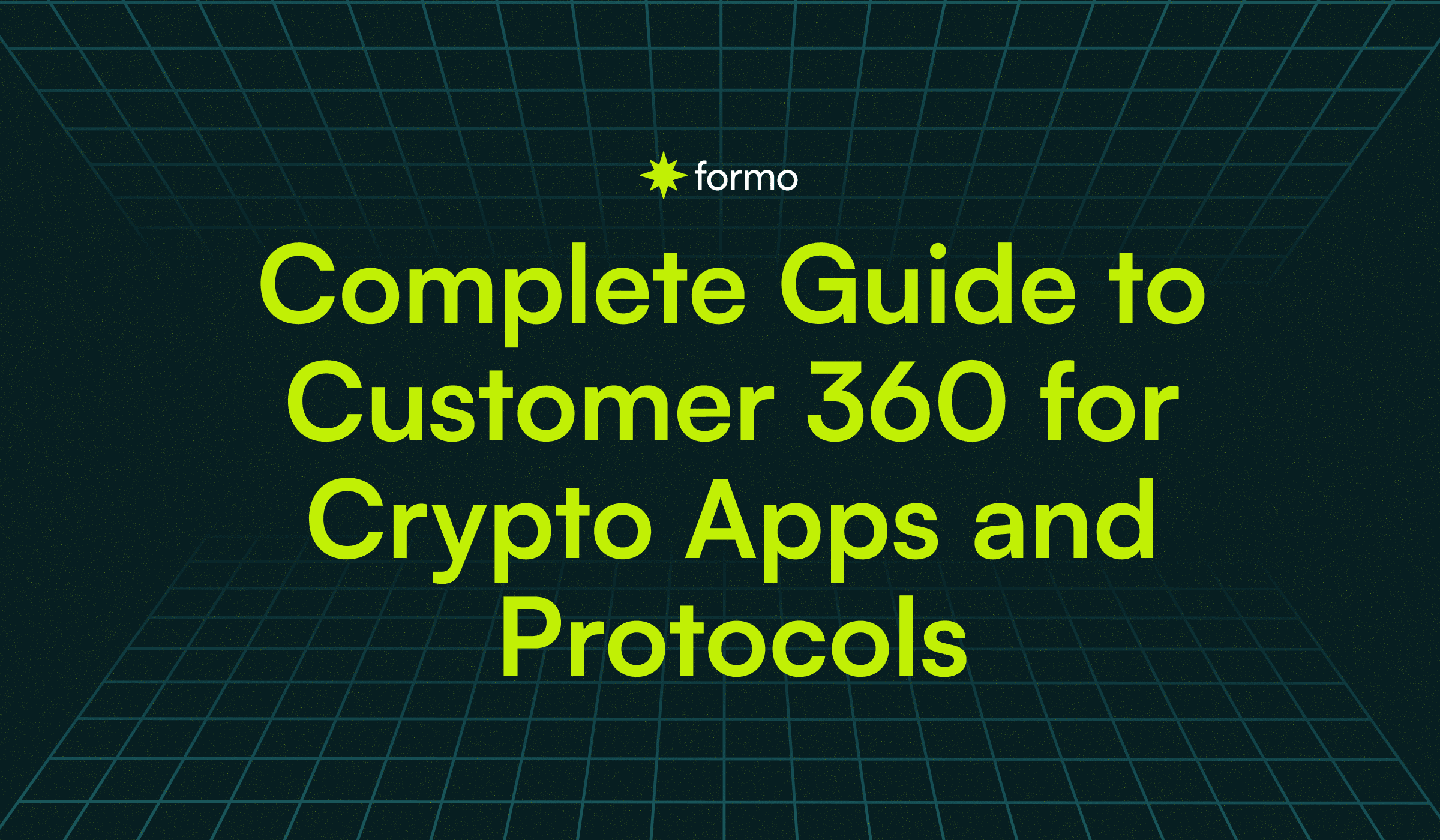Zero-party data provides accurate insights needed to create tailored user experiences, which is critical as the Internet becomes more privacy-conscious. Brands can use this data to understand users, predict behaviour, and refine marketing strategies. In this blog, we'll explore the benefits and differences between zero-party data and other types of data and how to collect and use it.
Key Takeaways:
Zero-party data is the most privacy-friendly data, shared intentionally by users.
Zero-party data enables deep personalization, builds trust, and ensures compliance with GDPR and CCPA.
Collected directly via surveys, quizzes, and interactive tools—not inferred like third-party data.
Helps startups boost loyalty, predict behavior, and customize marketing.
Tools like Formo empower Web3 brands to collect zero-party data ethically and securely.

Zero-party Data is the most accurate and relevant user information, direct from the source.
What Is Zero-party Data?
Zero-party data is the information your customers intentionally share with you. Unlike data inferred from behavior or collected through cookies, this type of data is offered directly, making it incredibly reliable for building trust and delivering personalized experiences.
When you ask a user about themselves or what they're interested in, the data you collect from the response is Zero-party Data. Gathering this data is the most effective way to know and understand your target audience.
Examples of Zero-party Data questions:
"How often would you like to receive email from us?"
"What kind of content do you like?"
"How was your last shopping experience in our store?"
Zero-Party Data Examples
Use Case | Zero-Party Data Example |
Onboarding Survey | A new user selects their goals (e.g., “Learn to invest in crypto”) during sign-up |
Product Quiz | User selects “DeFi beginner” and “Layer 2 only” to get tailored dApp tutorials. |
Preferences Center | A subscriber chooses to receive only weekly product updates via email |
Wishlist / Favorites | A user saves 5 NFT projects they’re interested in tracking |
Personalized Dashboard | A user customizes their dashboard to display ETH and Solana only |
Profile Details | User verify their token holdings to unlock a unique NFT or token reward. |
4 Different types of data collection
Understanding the importance of Zero-party Data is impossible without first understanding what makes it unique. To do this, you need to understand all of the different types of data that can be collected from your users.
Zero-party Data
Zero-party Data is the newest and most valuable type of data because it represents information that users voluntarily and intentionally provide to a brand. It includes preferences, purchase intent, personal context, and details about how they want to be recognized by the brand.

Zero-party Data enables highly personalized experiences and marketing that users value
Users proactively share data, eliminating collection issues
The transparent collection process fosters a sense of partnership
Enables the deepest level of personalization based on direct user intent
First-party Data
First-party Data is the type of data collected directly from a company's users through their interactions. This includes data from website interactions, purchases, subscriptions, surveys, and other direct engagements.

First-party Data provides a clear picture of how users interact with the brand
Information that brands collect directly from their channels and sources
Competitive advantage through the unique user behavior of your collection
Collecting First-party Data can be resource-intensive, requiring investment in user relationships and robust data collection across owned channels.
Second-party Data
Second-party data is first-party data that a brand receives from a trusted partner. It displays additional user information to drive sales, fill gaps and can be used at the point of purchase.

Second-party Data is First-party Data from another organization that they share directly with you.
Richer insights enable more targeted and engaging campaigns
Enables sophisticated targeting of specific user groups
While Second-party Data can expand user insights, it has significant limitations compared to First-party Data, especially as privacy regulations evolve.
Third-party Data
Third-party Data is aggregated from multiple sources and sold by companies that did not collect the information directly.

Third-party Data is information collected and provided by external sources about individuals with whom they have no direct relationship
A more diverse set of user data than a brand could collect on its own
Provides valuable insights for entering new markets
While Third-party Data offers scale, it lacks the reliability, accuracy, and exclusivity of First- and Second-party Data.

Advantages and disadvantages of 4 types of data collection
How can Zero-party Data benefit your brand?
The ease of collection and potential drawbacks of other data types make Zero-party Data a critical focus for brands. This data offers several key benefits:
Accurate and reliable insights
Because Zero-party Data comes directly from the user, it is more trusted, explicit, and accurate than data inferred from other sources. Brands can rely on this information to make data-driven decisions.
Improved personalization
With users' stated preferences and intentions, brands can deliver highly personalized content, product recommendations, and experiences. Brands must respect and respond to this data to build trust and engagement.
Privacy compliance
Zero-party Data collection is inherently consent-based, making it highly compliant with evolving privacy regulations such as the General Data Protection Regulation (GDPR) and the California User Privacy Act (CCPA).
Competitive advantage
Zero-party Data provides valuable insights into unmet user needs and emerging trends, informing product and service development to better resonate with target audiences.
Build strong user loyalty
A personalized user experience helps build strong user loyalty, which can translate into repeat purchases and positive word-of-mouth.
Where does Zero-party Data come from?

Use surveys, quizzes, and forms to collect data and help users find the right products for their needs
Zero-party Data collection can cover a wide range of sources, including:
Surveys
Quizzes
Interactive tools and funnels
Ranking and rating buttons and sliders
Social media platforms
Transactional data
New users' registration details
Collecting Zero-party Data should be a seamless, enjoyable experience for users. Integrating it naturally into online interactions makes them more likely to engage. Zero-party Data is best collected through engaging digital touchpoints that directly ask users for more information and gradually accumulate over time.
How do you collect Zero-party Data?

6 strategies for collecting Zero-party Data
Here are 6 common strategies to effectively collect valuable Zero-party Data:
1. Interactive content
Create engaging quizzes, polls, trivia games, and surveys that capture Zero-party Data in real-time while providing personalized recommendations, product suggestions, or content based on user responses.
2. Contests and giveaways
Encourage users to share their interests and contact information by offering incentives such as contests and giveaways to create brand buzz while collecting valuable data.
3. Personalized email campaigns
Deliver targeted email campaigns that allow users to self-segment based on their preferences and collect non-personally identifiable information to enhance the personalization of future communications.
4. Gamification
Incorporate game-like elements such as points, badges, and leaderboards to reward users for sharing their interests and personal information, encouraging engagement and participation.
5. Social media engagement
Leverage social media platforms to create interactive experiences, ask questions, and encourage followers to share their opinions, building a strong social media presence and collecting Zero-party Data.
6. User feedback
Solicit user feedback through reviews, testimonials, or ratings, and offer incentives for participation, enabling brands to make informed decisions and improve their offerings based on user insights.
How to use Zero-party Data?
Marketers should view data as an active expression of user trust that can lead to lasting loyalty. Here are some expert zero-party data strategies:

8 Best ways to leverage Zero-party Data
Tailor product recommendations
Personalize product recommendations for each user based on their unique Zero-party Data, including their specific interests, preferences, and needs. Use insights from Zero-party Data analytics to match products to each user segment.
Build comprehensive user profiles
Combine Zero-party Data with other user data sources, such as purchase transaction history, browsing behaviour, and demographic information. Use the rich user profiles to segment users into more granular and accurate groups. Identify patterns and trends across multiple data sources to uncover unique user segments.
Create personalized marketing campaigns
Use impartial data to create highly targeted and engaging marketing messages that speak directly to individual user needs. Focus on user engagement and tie data collection to user value. Invest in high-quality feedback tools to streamline the data collection process.
Deliver unique and helpful content
When you gain insight into users' interests and passions through impartial data, you can deliver branded content that is seen as helpful, rather than irrelevant and intrusive. For example, send targeted content such as product review pages or home renovation inspiration based on stated preferences.
Invite users to relevant experiences
Use Zero-party Data to invite users to engage with your brand through interactive digital activities, product samples, or local events. Always let users know they are receiving this invitation because of shared data, and thank them for reinforcing the value of sharing information.
Build community connections
Zero-party Data enables you to facilitate lively discussions about important topics. This emotional connection is difficult to achieve with other types of data and can foster a strong sense of community.
Deliver tailored promotions and incentives
Offering special discounts, coupons, or incentives in exchange for Zero-party Data is an effective way to demonstrate immediate value to users. This is especially useful in the early stages of building your Zero-party Data engine.
Show user appreciation
Use Zero-party Data to go above and beyond to show users you care. This can include moments of surprise and delight, complementary products or services, personalized notes, or involving users in your upcoming decisions.

Unlock Zero-party Data and gain actionable insights with Formo
Easily create forms to collect Zero-party Data
Formo enables Web3 startups to create surveys, quizzes, and forms to collect Zero-party Data. Formo provides advanced survey logic, social media integration, and analytics that help you effectively collect Zero-party Data while respecting user privacy.
Zero-party data is changing the data landscape by putting users in control and helping brands build more meaningful relationships. Embracing zero-party data means committing to user-centricity and ethical data practices. Brands should use this data to gain a deeper understanding of users and drive product-led growth.
Learn more:
Follow us on LinkedIn and Twitter, and join our community to learn how Formo turbocharges growth for leading teams across web3!
FAQs
1. Is zero-party data stored onchain in Web3?
No, zero-party data is usually stored offchain for privacy and flexibility. However, it can be linked to wallet addresses for identity and segmentation.
2. Can zero-party data be anonymous?
Yes, especially in Web3. You can collect preferences or intent without needing personally identifiable information (PII).
3. How is zero-party data different from consent-based data?
All zero-party data is consent-based, but not all consent-based data is zero-party. Zero-party data must be actively and voluntarily provided.
4. What are the risks of misusing zero-party data?
Overpersonalization, poor storage practices, or sharing without consent can break user trust and lead to compliance issues.
5. Is zero-party data only for marketing?
No, it can improve product development, community engagement, support, and UX design, especially in user-driven ecosystems like DAOs or dApps.




